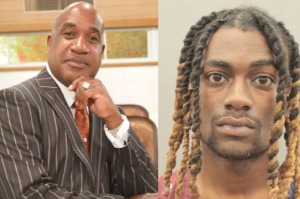Don't Tear Down the Confederate Battle Flag

Like many Southern boys, I grew up with two flags hanging in my room — an American flag and a Confederate battle flag. The American flag was enormous, taking up much of one wall. It was the "1776" flag, with 13 stars in a circle in the field of blue. My grandmother bought it for me on the bicentennial, and for years it was a treasured possession. The flag took on a special meaning later in life, when I learned more of a family history that included service with General Washington, suffering at Valley Forge.
The Confederate battle flag was much smaller, and it hung over my bookshelf. We bought it at the Shiloh battlefield in Tennessee, where one of my Confederate ancestors fought and where Albert Sidney Johnston died — the general that many considered the great hope of the Confederate Army in the West. My Confederate forefathers went on to fight at Vicksburg, at the battles of Franklin and Nashville, and in countless skirmishes across Tennessee and Mississippi. I grew up looking at old family pictures, including men who still wore their Confederate uniform for formal portraits — long after the war had ended.
Like many Southern families', my family's military story didn't end with the Civil War — it continued on to World War I, the European theater in World War II, the Cuban Missile Crisis, and then to my own recent deployment during the Surge in Iraq. The martial history of our family is inseparable from the family story, and it includes men in gray.
So I've followed this most recent round of debate over the Confederate battle flag with perhaps greater than normal interest. In the immediate aftermath of mass shootings, there is always a demand to "do something." Always, that demand involves gun control — typically, gun-control measures that wouldn't have actually stopped the shooting in question. But often there's something more. In the aftermath of the Gabby Giffords shooting, the Left demanded "civility" — despite zero evidence that the barking-mad perpetrator was motivated by any form of political discourse. Now the demand is to remove the Confederate battle flag from a Confederate memorial in South Carolina (and presumably elsewhere). The Atlantic's Ta-Nehisi Coates, with characteristic vehemence, says, "Take down the flag. Take it down now." His call — and others — have resonated around the web.
There's a disturbing habit on the Left of trying to find the position that renders one especially virtuous in their identity politics culture — regardless of its real-world impact — and then sneering from that high ground at all who dissent. But that's certainly not everyone's motive, and it's certainly not the motive of those calling for the flag's removal at National Review. It's simply undeniable that the Confederate battle flag is a painful symbol to our African-American fellow citizens, especially given its recent history as a chosen totem of segregationists. So it's critical to respond to the argument in good faith. And just as the history of the Civil War is personal to me, so is America's present racial reality. As I've mentioned before, my youngest daughter is quite literally African-American (born in Ethiopia and now as American as apple pie), and when she's a little bit older, we'll no doubt have many tough conversations about history and race.
If the goal of our shared civic experience was the avoidance of pain, then we'd take down that flag. But that's of course not the goal. Rather, we use history to understand our nation in all its complexity — acknowledging uncomfortable realities and learning difficult truths. For white southerners — especially those with deep roots in the South — those difficult truths are presented front and center throughout our lives. Yes, the South seceded in large part to preserve slavery. Yes, had the South prevailed, slavery not only would have been preserved for the indefinite future, it may have even spread to new nations and territories. And no, while some southerners were kinder than others, there was nothing "humane" about the fundamental institution of slavery itself. As Coates and others have often and eloquently explained, it was a system built on plunder and pain.
But there are other difficult truths. Among them, when the war began, it was not explicitly a war to end slavery. Indeed, had the Union quickly accomplished its war aims, slavery would have endured, at least for a time. When hundreds of thousands of southern men took up arms (most of them non-slave-owning), many of them fought with the explicit belief that they were standing in the shoes of the Founding Fathers, men who'd exercised their own right of self-determination to separate from the mother Country. Others simply saw an invading army marching into their state — into their towns and across their farms — and chose to resist.
And no one can doubt their valor. Both sides displayed breathtaking courage, but the South poured itself into the fight to an extent the modern American mind simply can't comprehend. If you extrapolated Southern losses into our current American population, the war would cost the lives of a staggering 9 million men, with at least an equivalent number injured. To understand the impact of that human loss, I'd urge you to read Harvard president Drew Gilpin Faust's Republic of Suffering — a book that explores the psychological impact of omnipresent, mass-scale death on southern culture.
Those men fought against a larger, better-supplied force, yet — under some of history's more brilliant military commanders — were arguably a few better-timed attacks away from prevailing in America's deadliest conflict. Then, the defeated survivors came home to the consequences of total war. Large sections of the South were simply devastated — crops burned, homes burned, and livestock slaughtered or scattered. Entire cities lay in ruin.
The South had to rebuild — under military occupation — and it had to rebuild more than just its physical infrastructure. It had to reimagine itself. It ultimately did so for good and ill. The worst of that new South was obvious: the gradually tightening grip of a new and different era of racial oppression, one that culminated in Jim Crow, lynching, and systematic segregation. This is the side of history that is now taught clearly and unflinchingly — and should be taught. But that wasn't the whole story, not by any means. The region also rebuilt by honoring its war dead and extolling a culture of military valor. Through this reverence for valor, the defeated South, ironically enough, soon supplied the newly reunified nation with many of its greatest warriors — men who were indispensable in preserving our democracy against the existential threats of fascism and communism. To this day, the South supplies more than its fair share of soldiers, men and women who lay down their lives to protect us from the deadly threat of jihad.
It is telling that the South's chosen, enduring symbol of the Confederacy wasn't the flag of the Confederate States of America — the slave state itself — but the battle flag of the Army of Northern Virginia, Robert E. Lee's army. Lee was the reluctant Confederate, the brilliant commander, the man who called slavery a "moral and political evil," and the architect — by his example — of much of the reconciliation between North and South. His virtue grew in the retelling — and modern historians still argue about his true character — but the symbolism was clear. If the South was to rebuild, it would rebuild under Lee's banner.
Since that time, the battle flag has grown to mean many things, including evil things. Flying it as a symbol of white racial supremacy is undeniably vile, and any official use of the flag for that purpose should end, immediately. Flying it over monuments to Confederate war dead is simply history. States should no more remove a Confederate battle flag from a Confederate memorial than they should chisel away the words on the granite or bulldoze the memorials themselves.
I no longer have a battle flag at my house. The American flag flies proudly from (by far) the tallest flagpole in the neighborhood — a gift from my father-in-law, raised when I was deployed. But we have a room in our home that honors my family's history of service. On one side of a framed picture from my own time in Iraq is a painting from the Revolutionary War, on the other side is a picture tracing the history of the Confederate Army in the Civil War. It's all a part of the complicated, messy picture of who I am — of who we are. Removing the Confederate flag from Confederate memorials doesn't change that history, it merely helps shroud it in ignorance. The flag should stay.
This column was originally published at National Review.





























